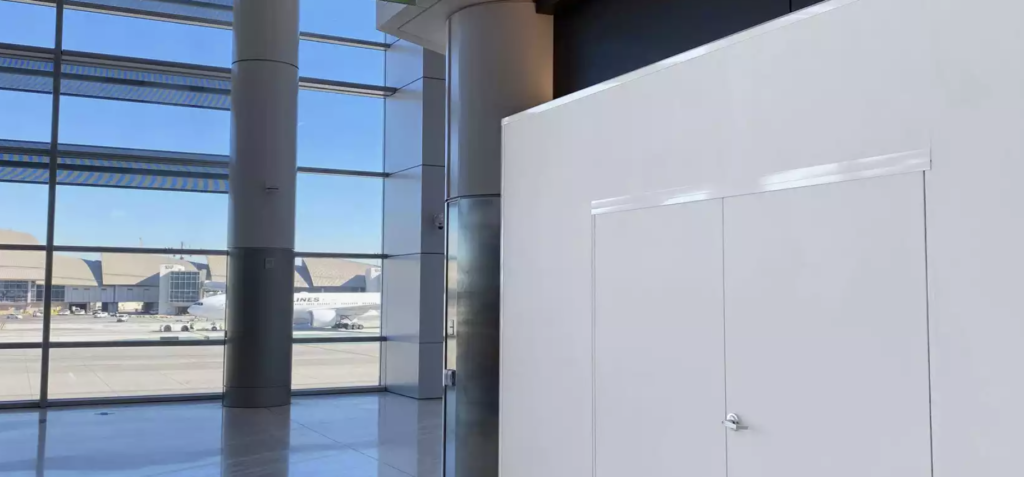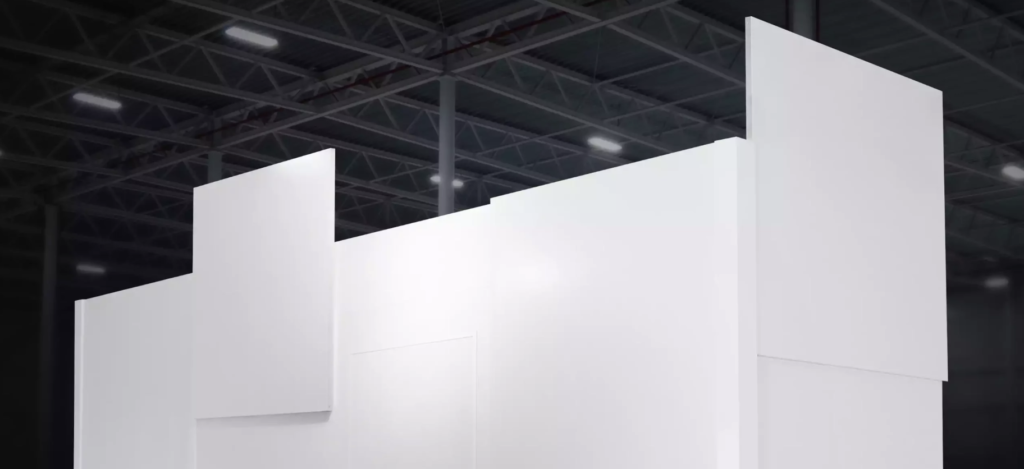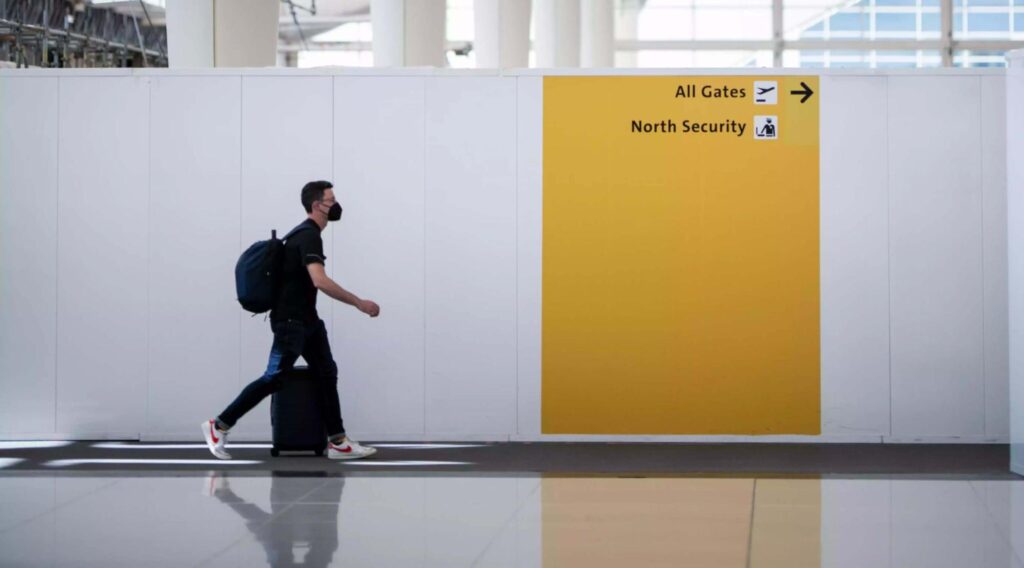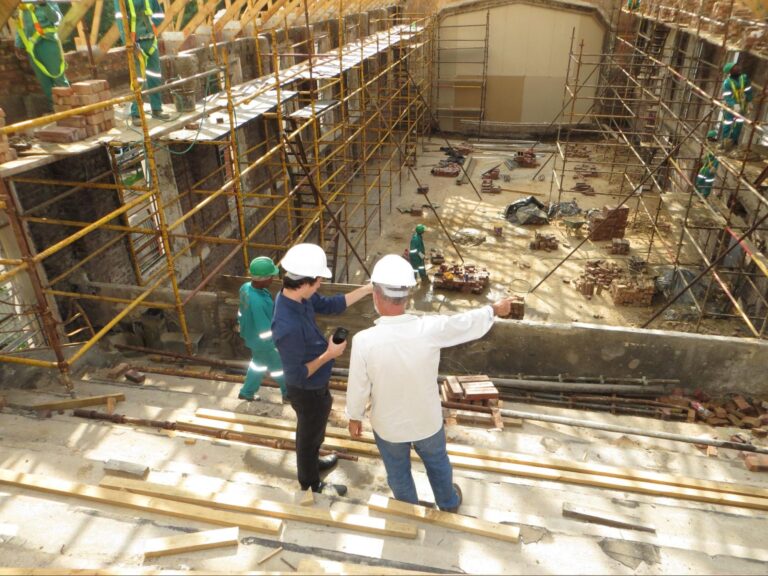Construction dust control is accomplished by enclosing construction spaces with barriers like temporary walls or plastic sheeting. With the right preparation, construction dust is much easier to contain and clean up.
Effective construction dust control is an integral part of any project, large or small. Keeping the construction zone as clean as possible helps reduce labor costs and protects systems and equipment from being clogged or damaged. Construction dust control also protects workers’ health, helps keep the project on schedule and avoids regulatory fines.
With SwiftWall® modular wall systems, you can minimize the spread of construction dust and increase efficiency in remodeling commercial spaces. Implementing SwiftWall® systems can save you time and money, while protecting you from unforeseen circumstances that impact the build.
Why Does Dust Spread on Construction Sites?
Dust spreads on construction sites due to activities that disturb or dislodge materials and cause particles to become airborne. These activities can range from demolition of old structures to cutting, drilling, or sanding new materials. Movement of vehicles and equipment and even the wind can spread dust across a construction site.
Without effective dust control measures in place, particulate matter can quickly become a pervasive issue that impacts the work site at many different levels.
Consequences of Inadequate Dust Control
The consequences of inadequate dust control can quickly spiral into all kinds of issues that construction companies and building owners want to avoid. Here are just a few to consider:
Higher Cleaning Costs
Increased dust levels at construction sites can result in higher cleaning costs. Dust particles can settle on equipment, machinery, and unfinished structures, adding to operational expenses. Investing in effective dust control strategies can help mitigate these types of costs in the long run.
Delays in Project Timelines
Dust contamination may require repeated cleaning or rework that can lead to schedule setbacks. Health issues or accidents due to poor dust control can cause labor shortages that further prolong completion. These types of delays can result in cost overruns, strained client relationships, and damage to the construction company’s reputation.
Damage to Sensitive Equipment and Surfaces
Construction dust can damage sensitive equipment and surfaces. It can infiltrate machinery, and cause malfunctions or total failure. This can lead to costly repairs, replacements, and project delays. Dust settling on unfinished surfaces can disrupt tasks like painting, by ruining the final product quality and requiring rework.
Respiratory Problems for Workers and Customers
Exposure to construction dust could cause respiratory problems for workers and nearby foot traffic. Prolonged inhalation of dust may result in conditions like chronic obstructive pulmonary disease (COPD), silicosis, and lung cancer. In the short term, dust exposure can trigger allergies, asthma attacks, and other respiratory problems.
Increased Risk of Accidents Due to Reduced Visibility
Construction dust can greatly reduce visibility on worksites and pose safety risks for workers and machinery. Poor visibility can lead to accidents, errors, and mishandling of equipment that can cause serious injuries or even fatalities.
Potential Violation of OSHA Regulations, Leading to Fines
OSHA (Occupational Safety and Health Administration) has established strict air quality guidelines for construction sites. Non-compliance can lead to hefty fines and negatively impact a company’s bottom line.
Benefits of Proper Dust Control
A well-maintained site with controlled dust ensures a healthier environment for workers, reduces cleanup and maintenance, and reflects positively on the company’s reputation for professionalism and safety compliance.
All of these aspects have a dollar cost attached — either spending dollars on clean-up or earning future dollars from having a reputation for efficient, clean construction.
5 Tips and Techniques for Dust Protection During Construction
To master the art of dust control at construction sites, consider the following strategies:
1. Pre-Construction Planning
Develop a remodeling dust control plan that identifies potential sources of dust and how to manage them. The following tips are a great place to start.
2. On-Site Practices
There are numerous steps you can take to reduce dust on-site. Here are a few:
- Water Sprays: Use water misting to weigh down dust particles.
- Containment Measures: Utilize barriers and screens to contain dust within work areas.
- Overhead Protection: Implement dust nets or tarps to capture airborne particles.
- Regular Housekeeping: Schedule frequent cleanup to prevent dust accumulation.
Following these tips can help to contain dust on the job-site and reduce its spread. This makes clean-up much easier and can save costs in the long run.
3. Material Handling
To protect materials from dust, use the following tips:
- Moisture Control: Keep materials damp, not wet, to minimize dust.
- Covered Storage: Store bulk materials under cover when not in use.
Keeping materials clean can speed up construction and improve visibility.
4. Equipment and Tools
When used properly, the equipment you have on site can help to reduce dust.
- Dust Extraction: Employ vacuum systems with tools that produce dust.
- Machinery Maintenance: Ensure that all equipment has proper dust filters and is regularly serviced.
With dust containment, your machinery could suffer. However, using covers and following up with maintenance can keep everything running smoothly.
5. Worker Protection
To ensure workers don’t breathe too much dust, follow these steps:
- Personal Protective Equipment (PPE): Provide appropriate personal protective equipment, such as masks and goggles.
- Training: Educate workers on the importance of dust control and safe work practices.
Protecting worker safety is a top priority on any construction site, and dust can pose a larger risk than it seems.
The Best Solution: SwiftWall® Modular Wall Systems

SwiftWall® has crafted a specialized approach to containing and reducing construction dust with their modular wall systems. SwiftWall® systems are specifically designed to:
Enclose Construction Zones
They confine the work area to significantly reduce the escape of dust. Some of the systems create an airtight seal for situations where dust migration is a greater threat.
Minimize Dust Migration
By providing a physical barrier, they help prevent dust from reaching customer areas for a cleaner environment. This is especially important during remodeling when a building is still being used but certain areas are under construction
Eliminate Traditional Temporary Walls
Traditionally, construction firms looking to control dust will erect temporary walls built from lumber and drywall. Not only is this an extra expense, but the walls are unlikely to be taken apart and reused.
That’s lumber, drywall, and fasteners being bought and implemented for every build, which amounts to additional labor to build and then dispose of the temp walls. Not to mention this practice doesn’t help sustainable initiatives by creating more waste.
SwiftWall® systems are made to be reused. This is a massive benefit to construction companies as SwiftWall® can be used on multiple projects.
Recyclability
With the majority of the components being up to 90% recyclable and SwiftWall® Max 100% recyclable, these products help reduce waste in dust control practices.
You won’t have to send studs and drywall temp walls to the dump, and SwiftWall® products can be readily recycled at the end of their lifecycle.
SwiftWall® Temporary Wall Systems: A Closer Look at the Options
SwiftWall® solutions have helped revolutionize construction dust control and we offer a suite of options for your specific needs:
SwiftWall® Pro is our workhorse. Versatile and reconfigurable, SwiftWall® Pro is ideally suited for construction operations looking for lightweight, durable, and reusable modular wall systems for dust control. This system offers aluminum joiners for fast, easy, durable install, amounting to 5x faster install than studs and drywall.

SwiftWall® Flex is a revolutionary modular wall system based on SwiftWall® Pro that provides variable height adjustment and an airtight seal channel. It’s perfect for applications where extreme dust control is necessary, like hospitals, healthcare facilities, and retail spaces where business is on-going in non-construction areas.

SwiftWall® Max is a robust and multifunctional modular wall system that delivers impressive durability well-suited for load-bearing and wind-bearing applications. Interlocking modular panels add structural integrity and panels can be stacked up to 30 feet high.

SwiftWall® Lite offers all of the same features as SwiftWall® Pro but with foam joiners rather than aluminum and our most economical price point. While durability remains the same between the two, SwiftWall® Lite has a shorter lifespan due to the foam joiners over Max’s aluminum joiners. Even so, SwiftWall® Lite can be used anywhere from 5-10 times if installed and uninstalled with care.

By integrating SwiftWall® modular walls into construction sites, businesses can effectively manage and reduce the presence of dust. This can lead to safer, cleaner, and more compliant work environments, all while reducing costs.
Choose SwiftWall® for Efficient Dust Control at Your Construction Site
Mastering construction dust control is about more than just compliance; it’s about operational excellence, worker safety, and project efficiency. If you’re looking to maintain business operations, cleanliness, and protect customers and workers during construction, SwiftWall® provides effective, adaptable, and sustainable solutions.
With our customizable, reusable, and recyclable walls, managing construction dust becomes a strategic advantage. Contact us today for more information!


